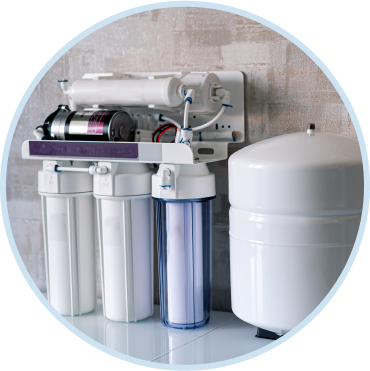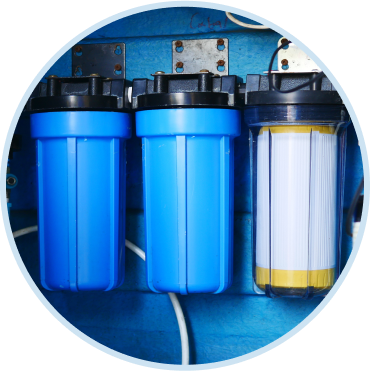Many households spend significant money on bottled water because of concerns over their tap water. Your household doesn’t have to do that. Pure Plumbing recommends whole-home water treatment in Richardson, TX, as a much more cost-effective alternative. Our team can help you configure water filtration in Richardson that eliminates all potential risks.
Water Filtration Systems in Richardson, TX
With Camera Inspection

Home Water Filtration Installation
There are two core types of water purifiers for the home: point of use (POU) and point of entry (POE). POU systems are more affordable but generally deliver a lower volume of water. Common examples include canister filters for kitchen sinks and dedicated water purifiers for coffee and drink makers.
POU systems cost more initially but are often more cost-effective in the long term. They also have the advantage of providing filtered water from every tap in the home. This is possible because they function between the main water line and the home’s plumbing system. That is a potential bottleneck, which is why professional system sizing is so crucial. If the flow rate is too low, you may experience low water pressure and other plumbing issues.
Most home water purifiers function by forcing water through a series of filtration stages. Which stages a water treatment system has will dictate what it can filter and to what degree.
The traditional system has one or more mechanical filtration stages. There’s often a prefilter that traps the largest particles and that is particularly important for well systems. A sediment filter typically provides the main mechanical filtration. It can trap dirt, silt, clay, and so forth. A sediment filter can even trap biological contaminants if its absolute pore size is small enough.
Water purifiers will typically have activated carbon as well. It’s a highly absorbent, manufactured form of carbon that soaks up gases and chemicals, including pesticides and pharmaceuticals. In doing so, it also improves the taste and smell of your drinking water.
An ultraviolet (UV) lamp is an option for many water purifiers. While sediment filters trap some biologicals, UV light is even more effective. It can neutralize over 99% of bacteria and viruses.
You also have the option of conditioning stages. Consider a home with moderately hard water. It may not warrant a dedicated water softener, but you could soften the water slightly with a conditioner. There are also conditioners that can nudge up pH if your water is too acidic or down if it’s too alkaline.
- Gases
- Parasites
- Chemicals
- Particulates

Richardson Home Water Treatment Solutions
Pure Plumbing specializes in water filtration for Richardson homes and has for over a decade. Our licensed plumbers install customized water purification systems for unique homes.
We install and service all brands and models. You can count on us around the clock for emergency services. For replacements and new installations, we offer free estimates and financing on approved credit.
Would you like to learn more about residential water treatment in Richardson? Call Pure Plumbing or contact us online with questions and to schedule an on-site consultation.
Pure Plumbing
©2025 Pure Plumbing. License: #M-43576. Web Design by RYNO Strategic Solutions.
All Rights Reserved Privacy Policy Terms & Conditions